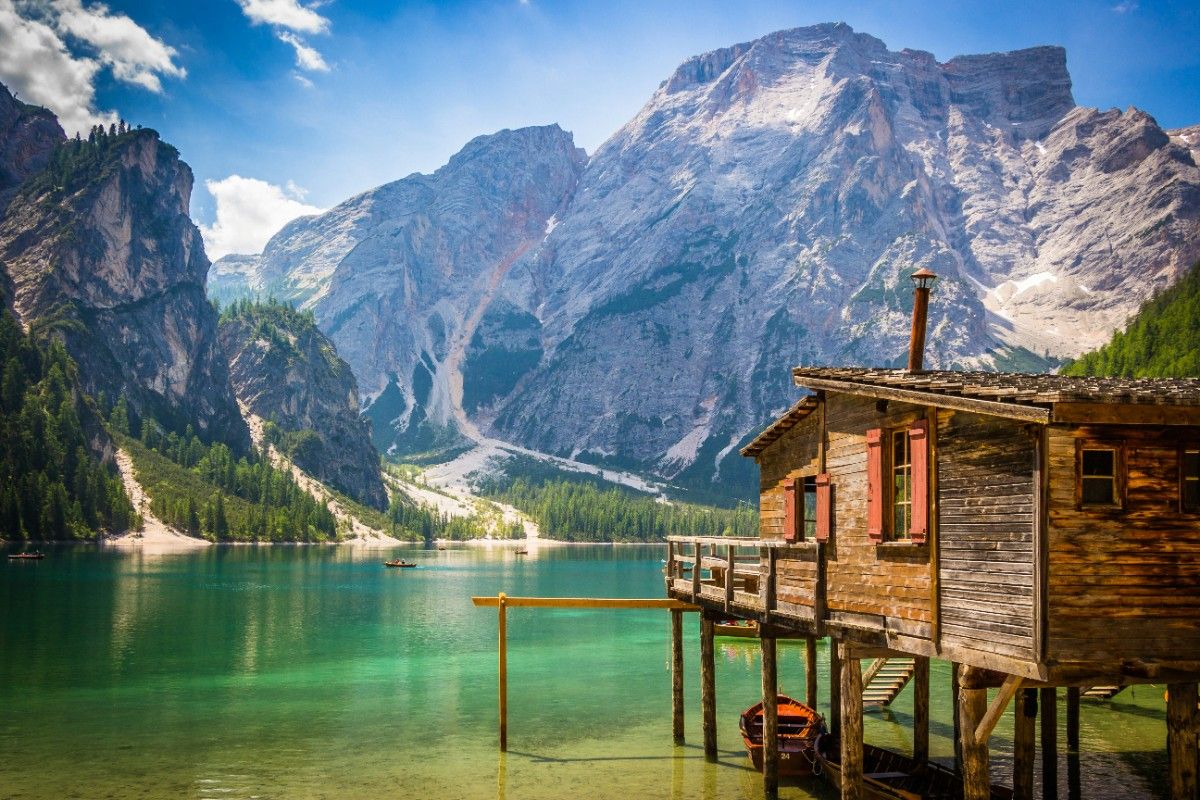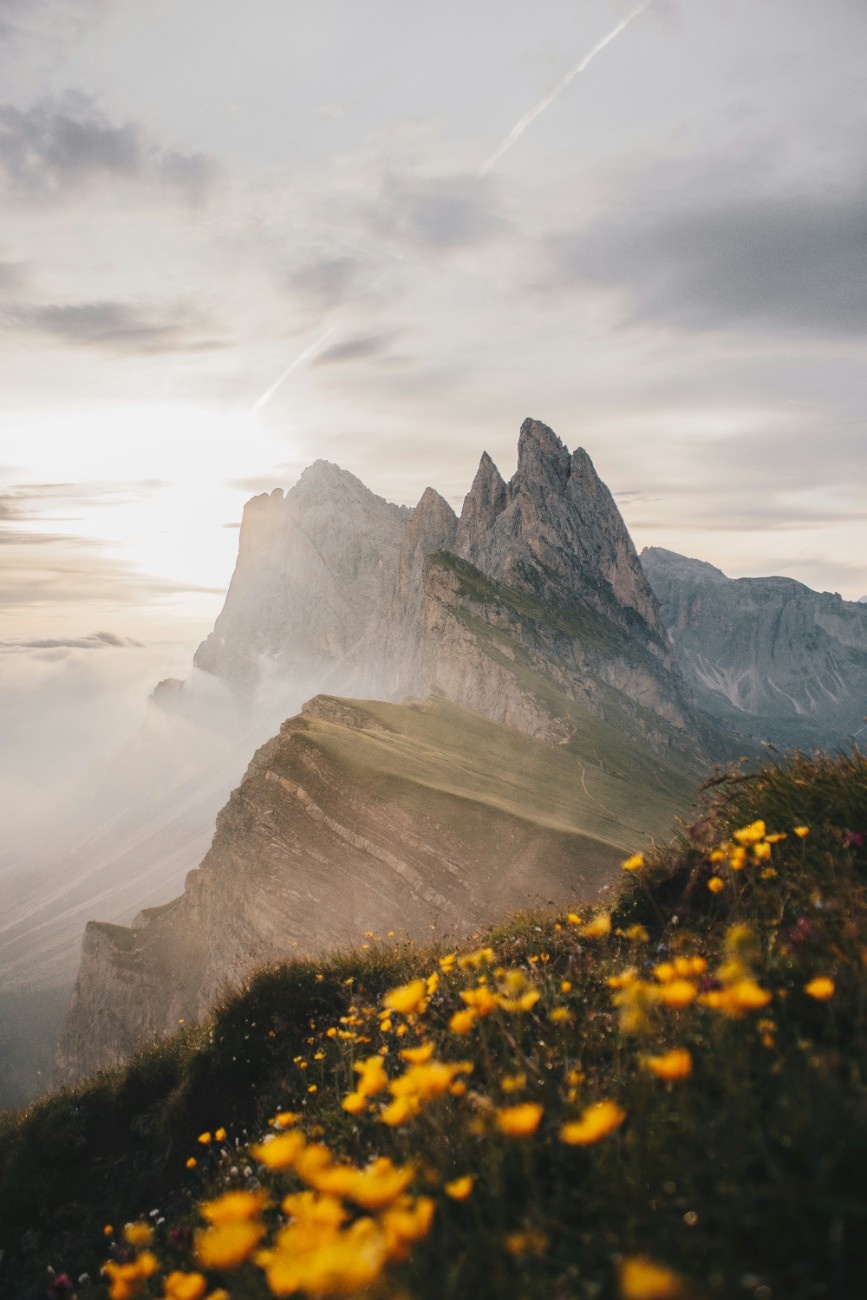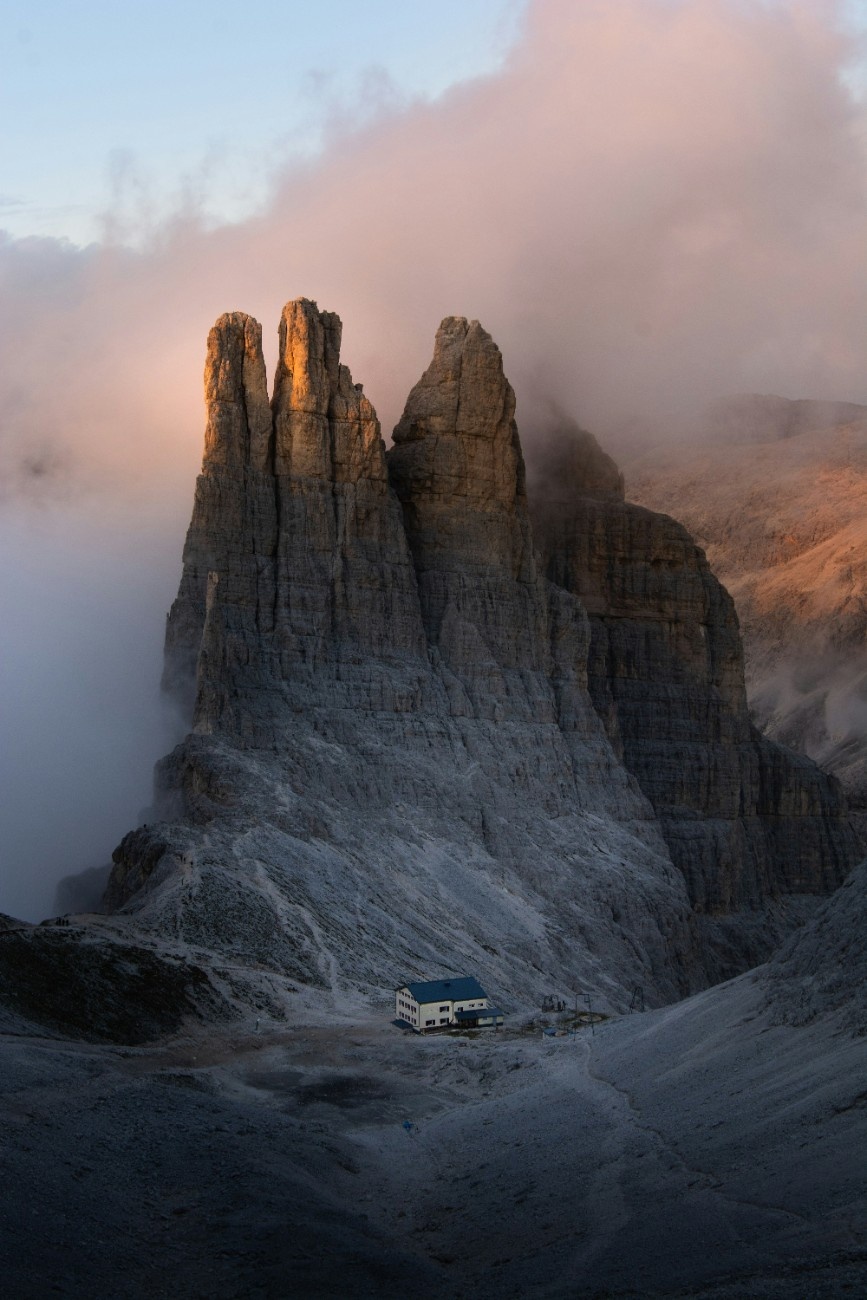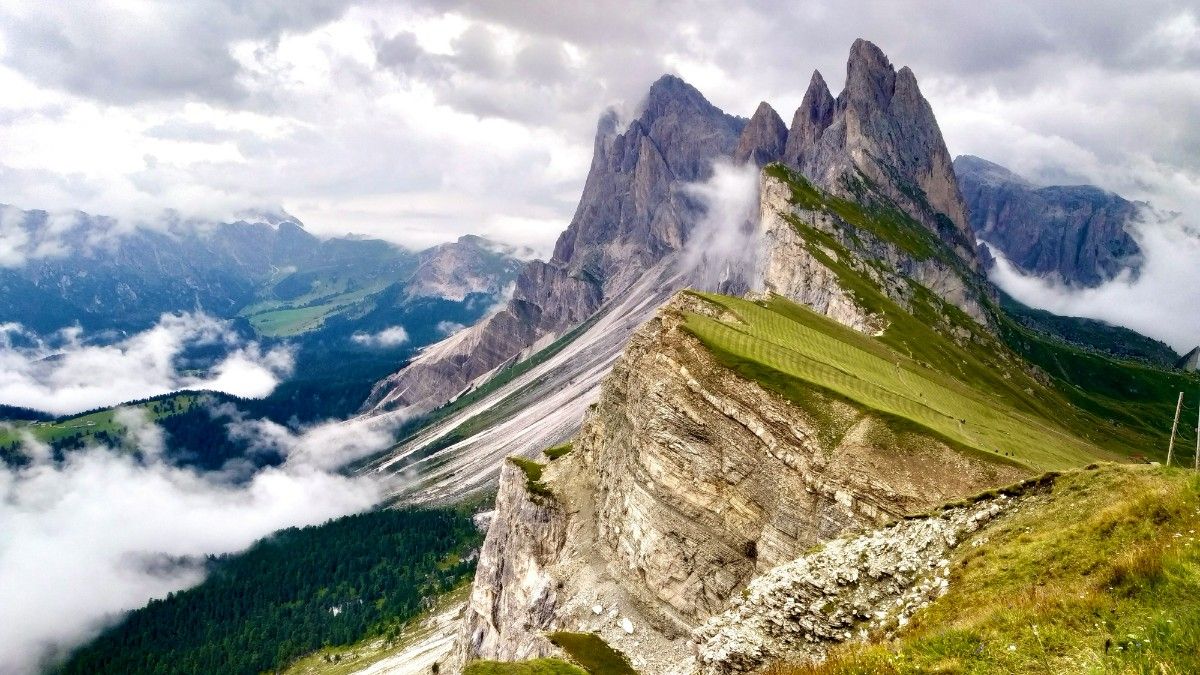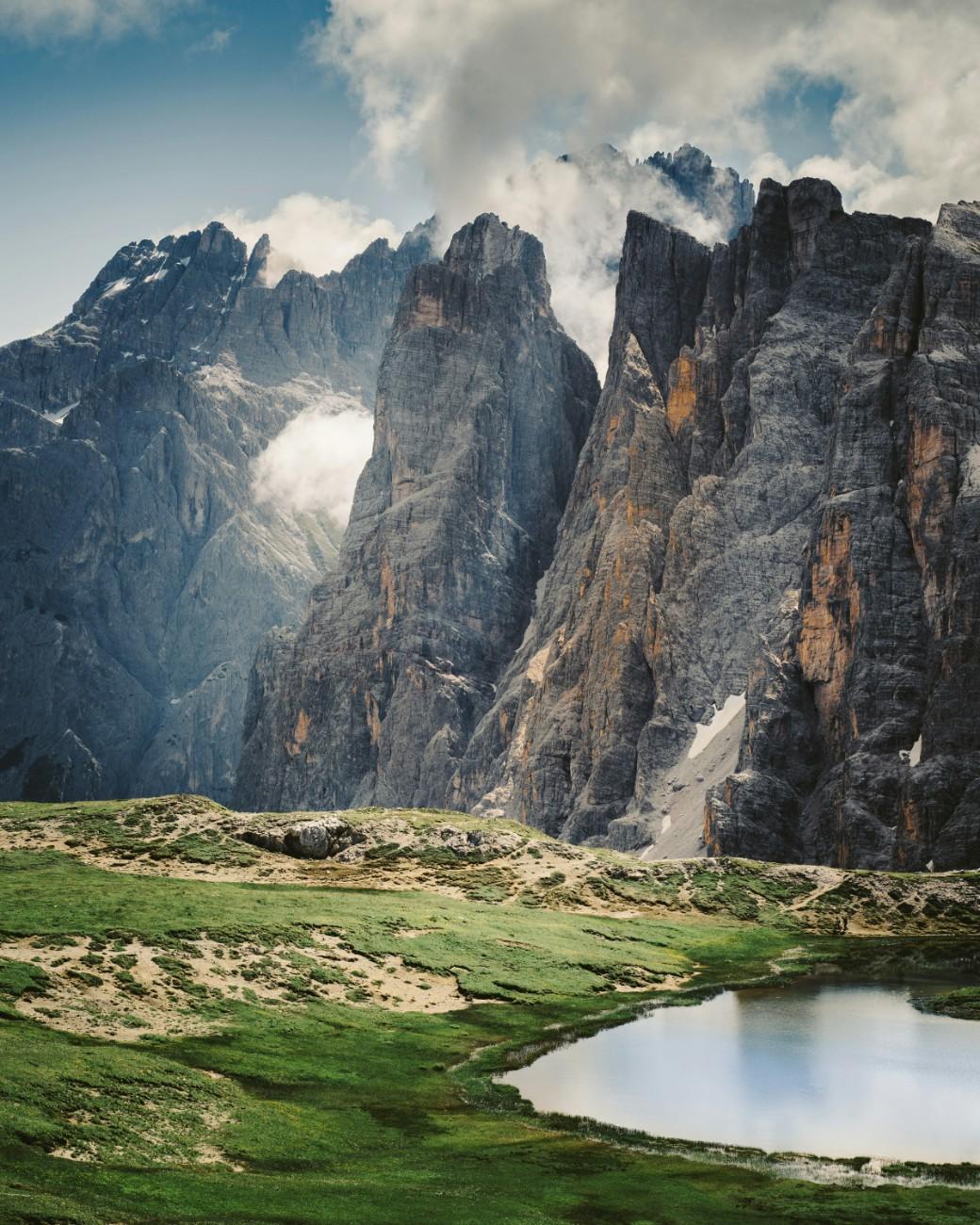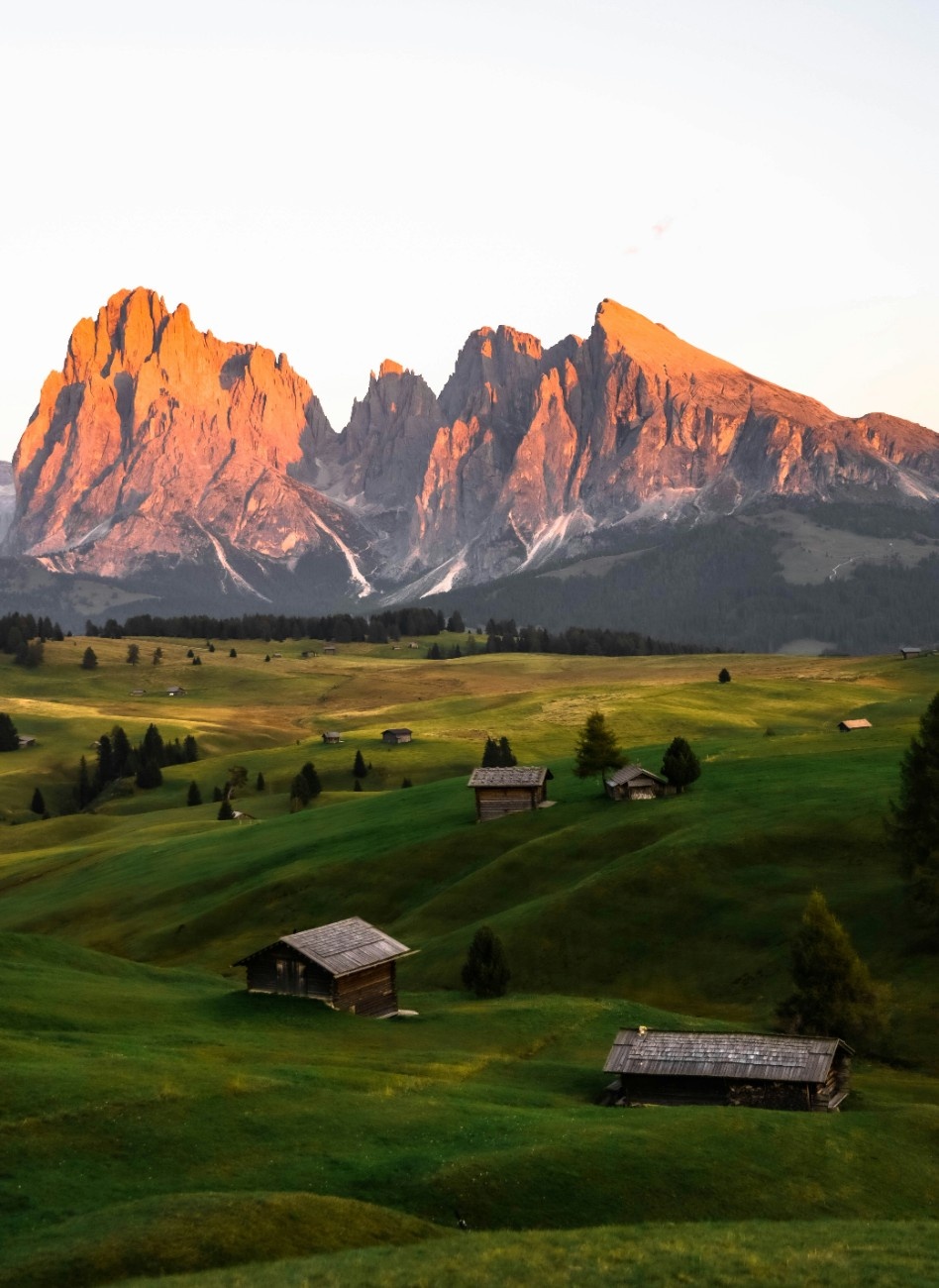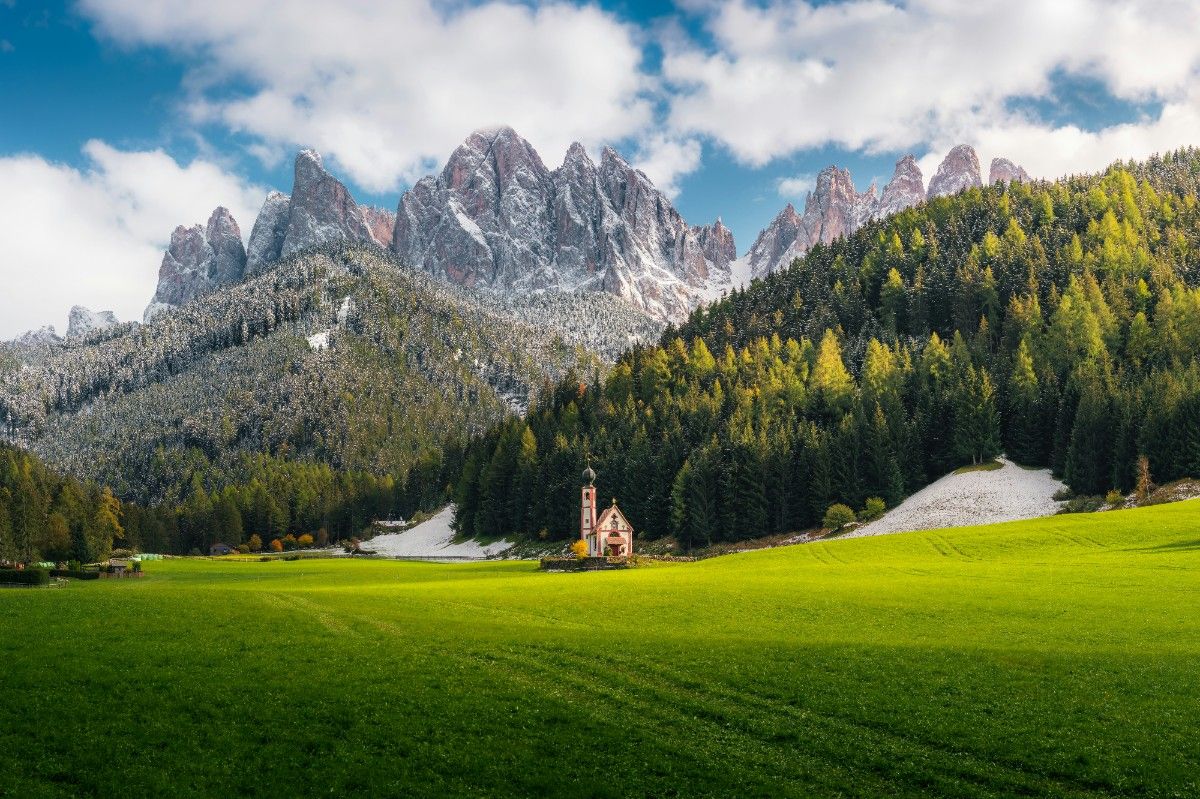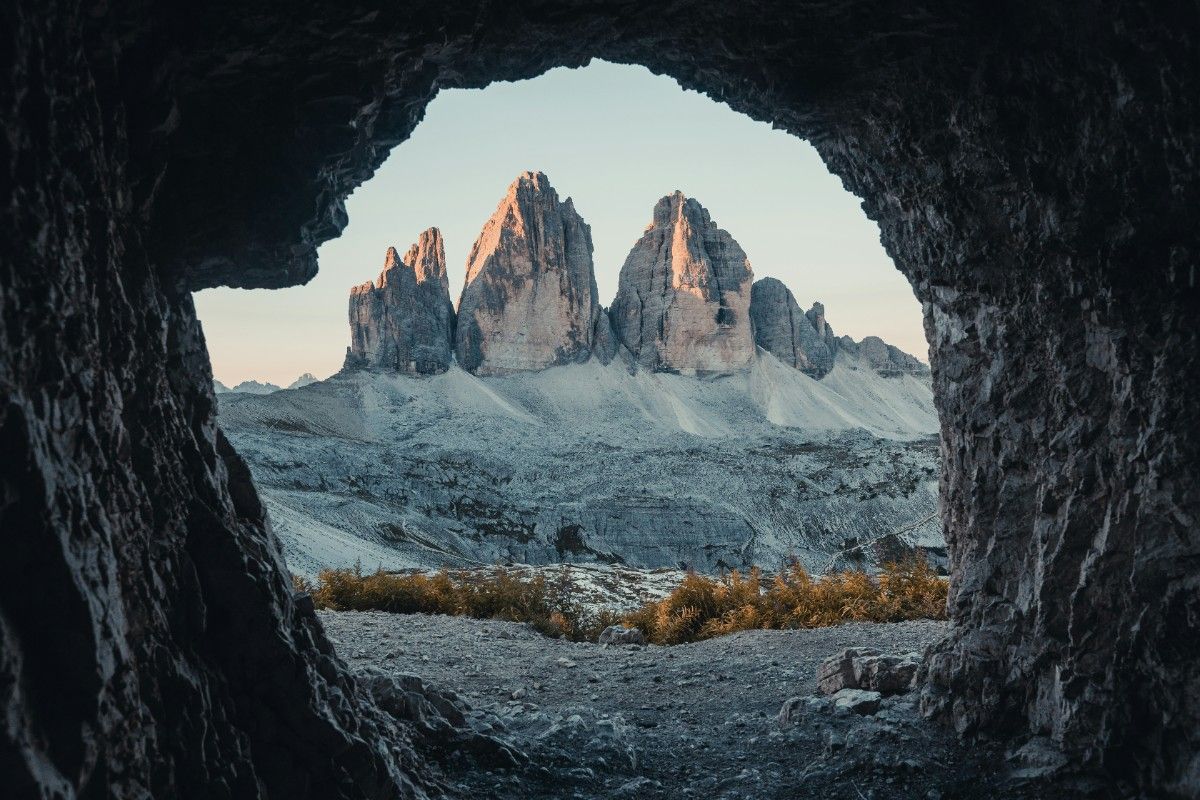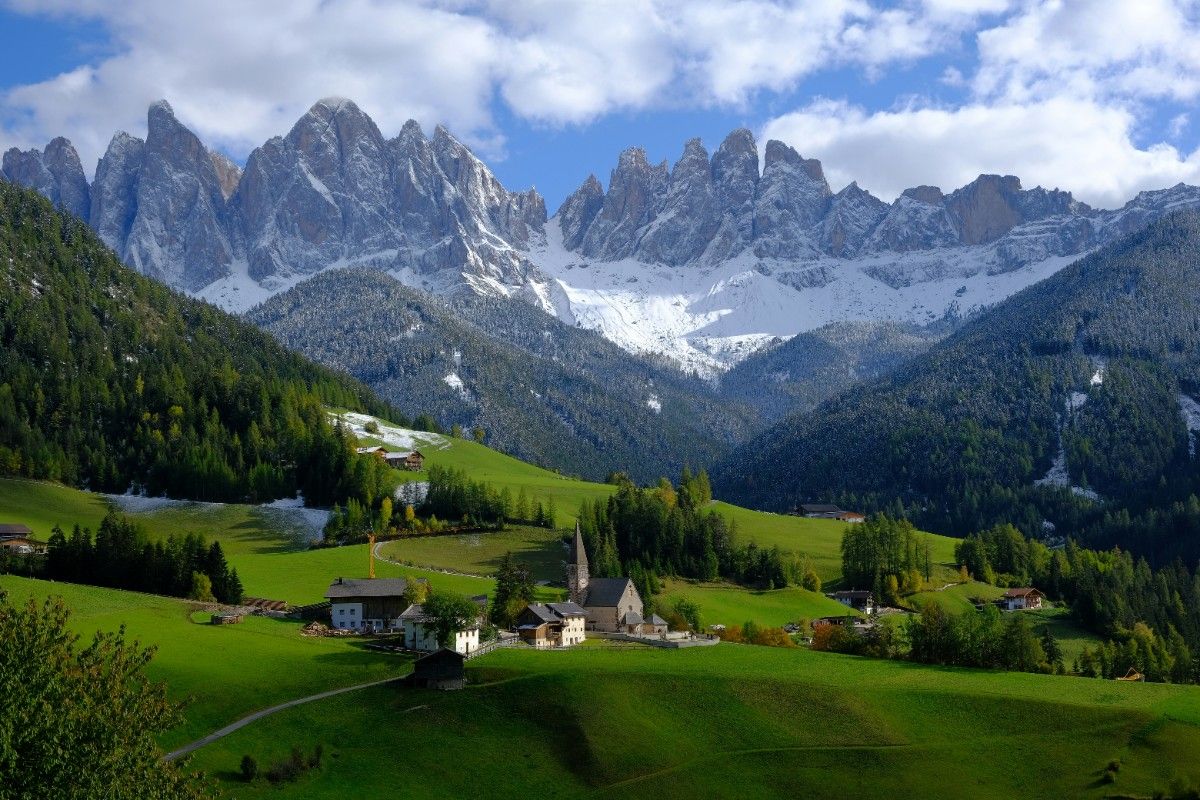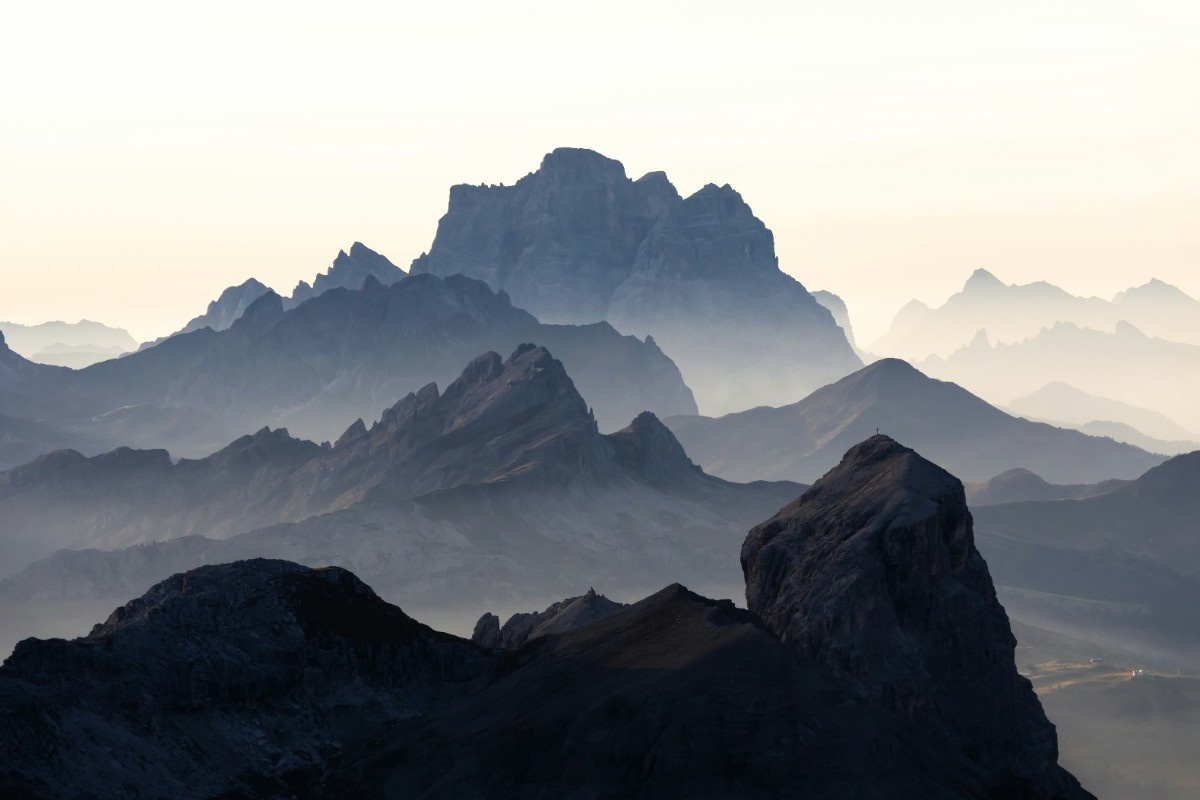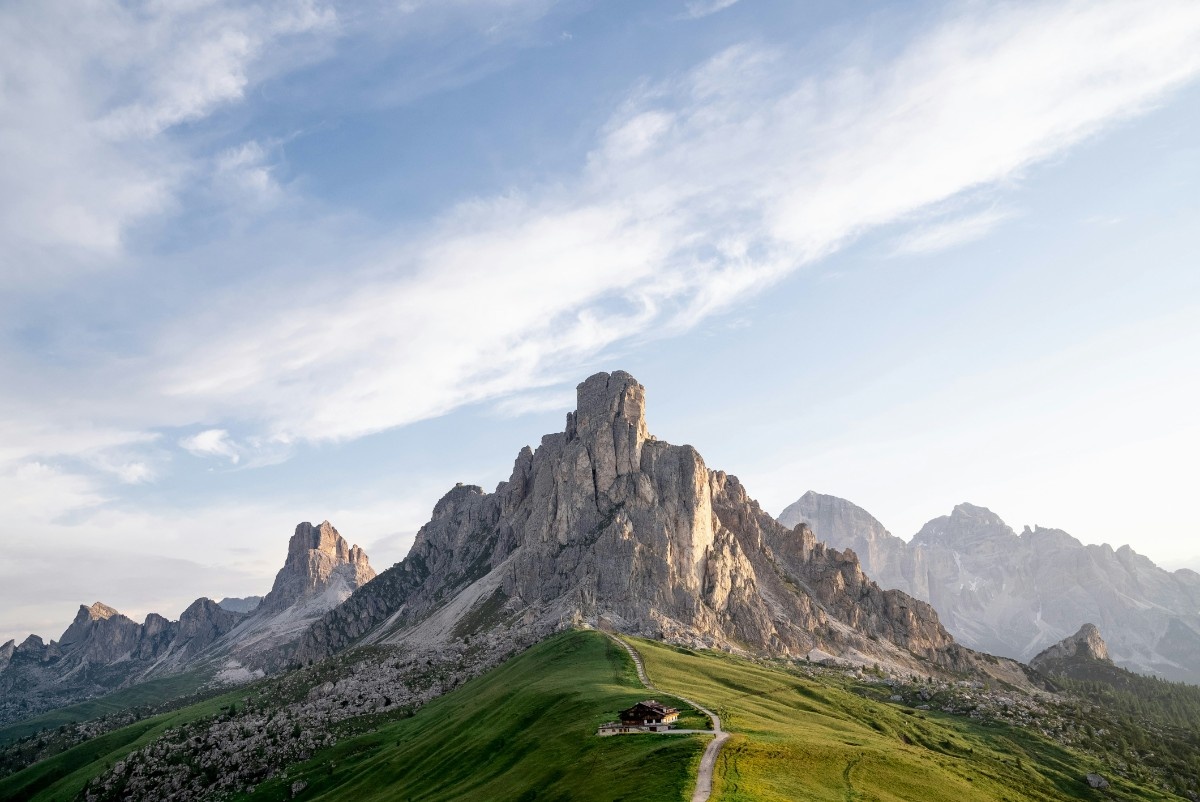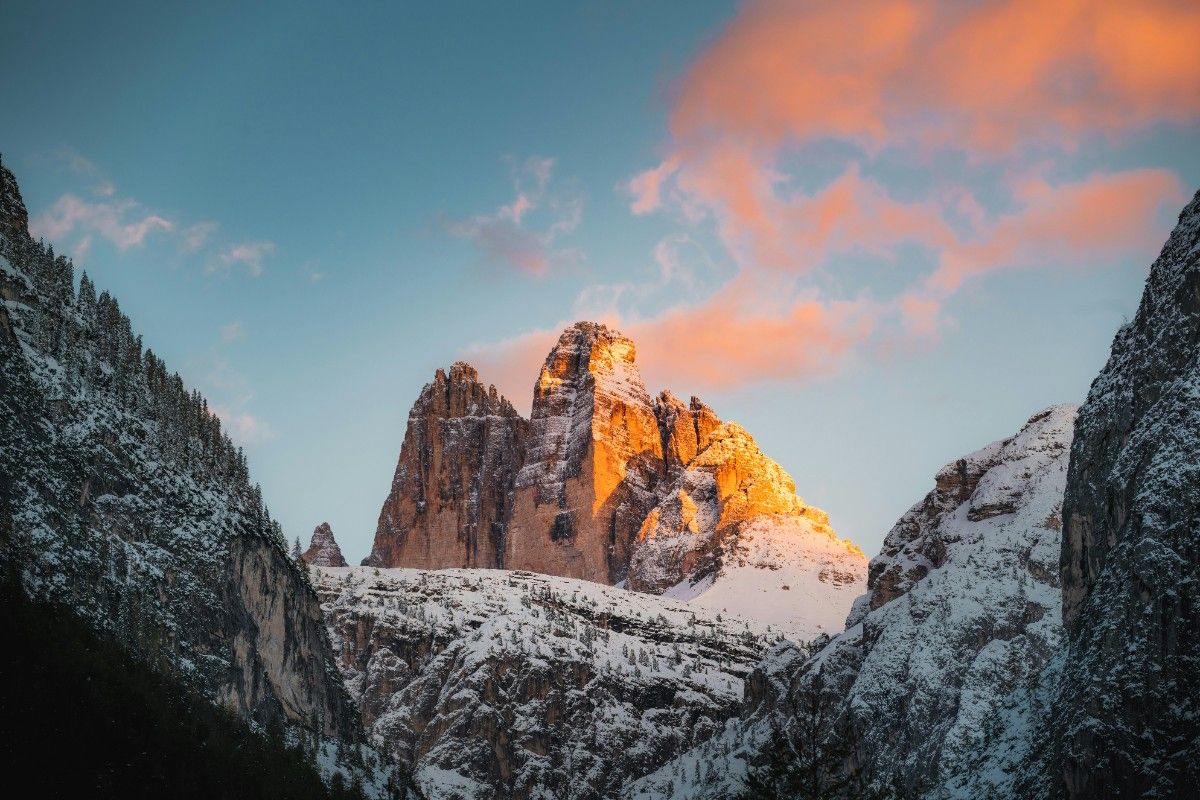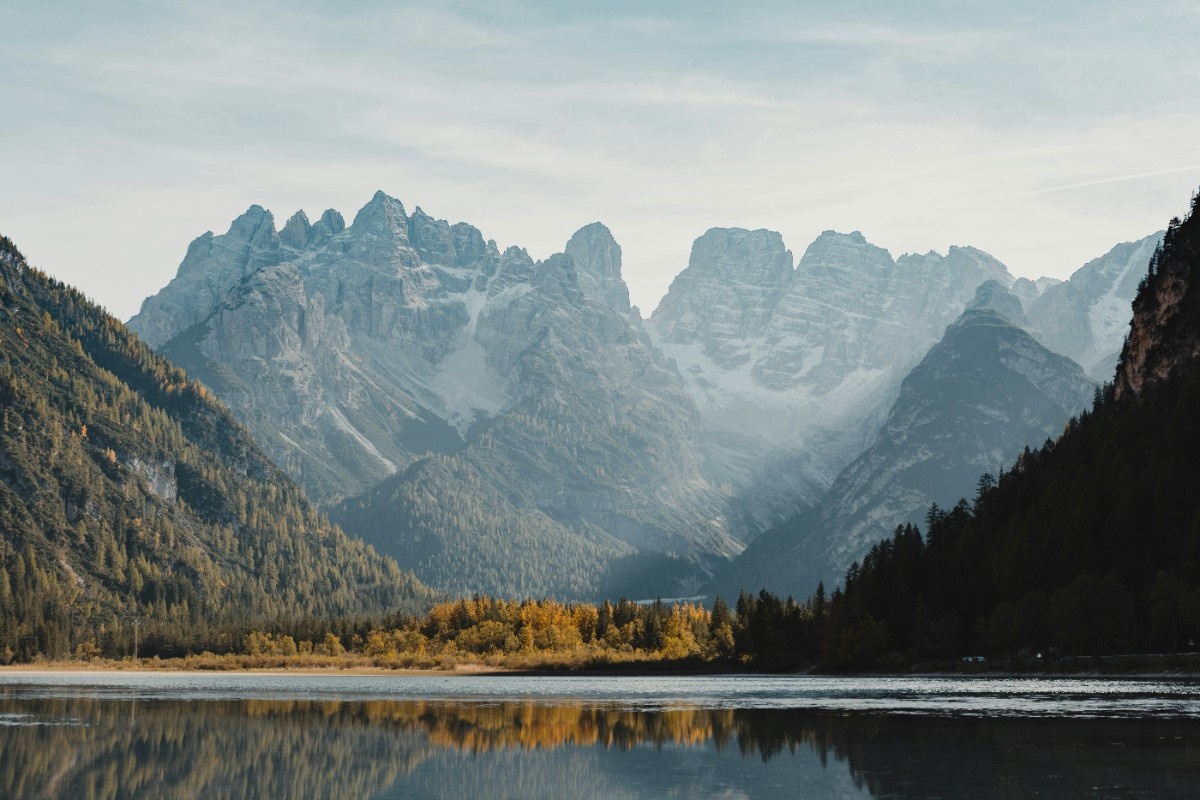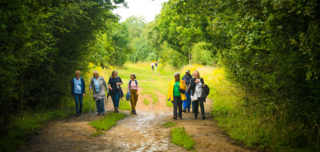Introduction to the Dolomites
Nestled in the northeastern corner of Italy, the Dolomites are a breathtaking mountain range that beckons to hikers and outdoor enthusiasts from around the globe. This UNESCO World Heritage Site is renowned for its dramatic peaks, pristine landscapes, and an extensive network of trails that cater to all skill levels. Whether you're a seasoned trekker or a casual walker, the Dolomites offer an unforgettable experience amidst some of the most stunning scenery in Europe.
The Allure of Hiking in the Dolomites
Hiking in the Dolomites is an experience like no other. The range offers an incredible diversity of landscapes, from lush alpine meadows and pristine forests to rugged peaks and towering cliffs. The well-maintained trail network allows hikers to explore the region's natural beauty at their own pace, whether they prefer gentle walks or challenging multi-day treks. Along the way, hikers can marvel at the unique geological formations that make the Dolomites so special, including the distinctive pale-coloured rocks that glow a warm pink and orange hue at sunset.
One of the most appealing aspects of hiking the Dolomites is the opportunity to immerse oneself in the region's rich cultural heritage. The mountains are dotted with charming villages and towns, each with its own unique character and traditions. Hikers can explore ancient castles and churches, sample delicious local cuisine, and interact with friendly locals who are proud to share their way of life with visitors.
Hiking Infrastructure and Support
Another reason why the Dolomites are such a popular hiking destination is the excellent infrastructure and support available to hikers. The region is home to an extensive network of rifugi, or mountain huts, which provide comfortable accommodation and delicious meals to weary hikers. These huts are strategically located along the trail network, allowing hikers to plan multi-day trips without the need to carry heavy camping gear.
In addition to the rifugi, the Dolomites also offer a range of other services and amenities to support hikers. Many of the towns and villages have outdoor shops where hikers can purchase maps, guidebooks, and other essential equipment. There are also numerous guide services and tour operators that offer guided hikes and treks, providing an excellent option for those who are new to the area or prefer a more structured hiking experience.
With its stunning natural beauty, rich cultural heritage, and excellent hiking infrastructure, it's no wonder that the Dolomites are considered a hiker's paradise. Whether you're looking for a gentle day hike or a challenging multi-day trek, this incredible mountain range has something to offer every type of hiker. So why not lace up your boots, grab your backpack, and head to the Dolomites for an unforgettable hiking adventure in the heart of Italy?
Geographical Location and Map of the Dolomites
The Dolomites: Location and Borders
The Dolomites are a mountain range located in northeastern Italy, primarily within the provinces of Belluno, South Tyrol, and Trentino. The range covers an area of approximately 18,000 square kilometres and is bordered by several distinct geographical features. To the north, the Dolomites are separated from the Austrian Alps by the Puster Valley. The Piave Valley forms the eastern border of the range, while the Brenta River marks its western edge. To the south, the Dolomites gradually transition into the Venetian Prealps.
The location of the Dolomites within the larger context of the European Alps is significant. The range is part of the Southern Limestone Alps, a sub-section of the Alps that is characterised by its unique geological composition and distinctive landscape. This location also makes the Dolomites easily accessible from several major cities in Italy and beyond, including Venice, Verona, and Innsbruck.
Understanding the Dolomites: Key Geographical Features
To better understand the geography of the Dolomites, it's helpful to examine a map of the Dolomites in Italy. The range is divided into several distinct groups, each with its own unique characteristics and attractions. Some of the most notable groups include:
The Sella Group: Located in the heart of the Dolomites, the Sella Group is known for its massive plateaus and towering peaks, including the iconic Sassolungo and Sassopiatto.
The Marmolada Group: Home to the highest peak in the Dolomites, the Marmolada (3,343 meters), this group is a popular destination for hikers and mountaineers.
The Pale di San Martino Group: Located in the southern part of the range, this group is characterised by its expansive plateaus and deep glacial valleys.
The Sexten Dolomites: Situated in the northernmost part of the range, the Sexten Dolomites are known for their rugged peaks and challenging hiking trails.
A map of the Dolomites also reveals the range's extensive network of valleys, which serve as important access points and transportation corridors. The most notable valleys include:
Val Badia: Located in the heart of the range, this valley is known for its picturesque villages and excellent hiking trails.
Val Gardena: Home to the popular resort town of Ortisei, this valley is a major hub for skiing and other winter sports.
Val di Fassa: Situated in the western part of the range, this valley is known for its stunning scenery and charming mountain villages.
Exploring the Dolomites: Trails and Landmarks
One of the best ways to explore the geography of the Dolomites is by hiking its extensive trail network. A map of the range reveals an incredible diversity of trails, ranging from gentle walks through alpine meadows to challenging via ferrata routes that scale sheer cliffs and narrow ridges.
Some of the most iconic hiking destinations in the Dolomites include the Tre Cime di Lavaredo, a trio of distinctive peaks that offer stunning views of the surrounding landscape; the Puez-Odle Altopiano, a vast plateau dotted with alpine lakes and wildflower meadows; and the Lago di Braies, a turquoise glacial lake surrounded by towering peaks.
In addition to its natural landmarks, the Dolomites are also home to numerous cultural and historical sites that are well worth exploring. These include ancient castles and fortifications, such as the Fanes Castle in the Val Badia, as well as charming mountain villages like San Candido and Corvara.
The Dolomites are a geographical wonder, with a unique combination of rugged peaks, lush valleys, and pristine lakes that make them a paradise for hikers and nature lovers. By examining a map of the range and exploring its key geographical features and landmarks, visitors can gain a deeper appreciation for the incredible diversity and beauty of this iconic mountain range in the heart of Italy.
Getting to the Dolomites: Transportation and Nearest Airports
Airports Near the Dolomites
One of the most common questions among those planning a trip to the Dolomites is how to get there. Fortunately, the region is well-connected to the rest of Italy and Europe, with several options for transportation and nearby airports.
If you're flying to the Dolomites, the nearest airports are Venice Marco Polo International Airport (VCE) and Treviso Airport (TSF), both of which are located approximately 160 kilometres to the south. These airports are served by numerous international airlines, making them convenient entry points for visitors from around the world.
Another option for those flying to the Dolomites is Verona Villafranca Airport (VRN), which is located around 170 kilometres to the southwest of the range. This airport is smaller than Venice Marco Polo but still offers a good selection of domestic and international flights.
For those coming from the north, Innsbruck Airport (INN) in Austria is also a viable option. Located just 120 kilometres from the northern edge of the Dolomites, this airport is particularly convenient for those planning to explore the Sexten Dolomites or the Val Pusteria.
Transportation Options from the Airports
Once you've arrived at one of the airports near the Dolomites, you'll need to choose a mode of transportation to reach your final destination within the range. The most popular options include:
Rental Cars: Renting a car at the airport is a convenient and flexible way to explore the Dolomites. All of the major airports mentioned above have several car rental companies to choose from. Keep in mind that some of the mountain roads in the Dolomites can be narrow and winding, so it's important to feel comfortable driving in these conditions.
Public Transportation: If you prefer not to drive, public transportation is a reliable and affordable option for getting from the airports to the Dolomites. From Venice Marco Polo and Treviso Airports, you can take a bus or train to major towns like Cortina d'Ampezzo, Dobbiaco, or Brunico. Similarly, from Verona Airport, there are bus and train connections to towns like Bolzano and Trento.
Private Shuttles: For a more direct and comfortable journey, you may want to consider booking a private shuttle transfer from the airport to your accommodation in the Dolomites. Many hotels and tour operators offer this service, which can be especially convenient if you're traveling with a lot of luggage or arriving at an odd hour.
Travelling to the Dolomites by Train or Bus
In addition to flying, the Dolomites are also well-connected to the rest of Italy by train and bus. The region's main railway hubs are Bolzano, Trento, and Belluno, all of which have regular connections to major cities like Venice, Verona, and Milan.
If you're travelling by bus, the main hub for the region is Dobbiaco, which has direct connections to cities like Munich, Innsbruck, and Venice. There are also numerous local bus services that connect the various towns and villages within the Dolomites, making it easy to get around even if you don't have a car.
While getting to the Dolomites may require a bit of planning and coordination, the region's well-developed transportation network makes it a relatively easy destination to reach. Whether you choose to fly into one of the nearby airports, take a train or bus, or drive yourself, you'll find plenty of options for accessing this stunning mountain range in the heart of Italy.
Where to Stay: Accommodation Options in the Dolomites
Types of Accommodation in the Dolomites
When planning your hiking holiday in the Dolomites, one of the most important decisions you'll need to make is where to stay. Fortunately, the region offers a wide range of accommodation options to suit every budget and preference, from cozy mountain huts to luxurious spa resorts.
One of the most unique and popular types of accommodation in the Dolomites are the rifugi, or mountain huts. These rustic shelters are scattered throughout the range, often located at high elevations along popular hiking routes. Staying in a rifugio is a quintessential Dolomites experience, offering the chance to immerse yourself in the mountain environment and connect with other hikers from around the world.
If you prefer a bit more comfort and amenities, the Dolomites also offer a good selection of hotels, guesthouses, and apartments in the towns and villages that dot the range. These options range from simple, family-run establishments to luxurious spa resorts with all the latest facilities and services.
For those on a tighter budget, camping is also a popular option in the Dolomites. The region has numerous well-maintained campgrounds, many of which offer stunning views of the surrounding peaks and valleys. Some campgrounds also offer basic cabins or bungalows for rent, providing a comfortable middle ground between tent camping and hotel stays.
Popular Destinations for Accommodation
When deciding where to stay in the Dolomites, it's important to consider your planned activities and the specific areas you want to explore. Some of the most popular destinations for accommodation include:
Cortina d'Ampezzo: Known as the "Queen of the Dolomites," Cortina is a chic resort town that offers a wide range of accommodation options, from luxury hotels to cozy mountain lodges. It's a great base for exploring the nearby peaks of the Ampezzo Dolomites, including the iconic Tre Cime di Lavaredo.
Val Gardena: This picturesque valley is home to several charming villages, including Ortisei, Santa Cristina, and Selva. It's a popular destination for skiers in the winter and hikers in the summer, with a good selection of hotels, apartments, and rifugi to choose from.
Alta Badia: Located in the heart of the Dolomites, the Alta Badia region is known for its stunning scenery, excellent cuisine, and well-developed hiking and skiing infrastructure. The main villages of Corvara, Colfosco, and La Villa offer a range of accommodation options, from luxury hotels to cozy bed and breakfasts.
Val di Fassa: This valley in the western part of the Dolomites is a popular destination for outdoor enthusiasts, with a wide range of hiking and climbing opportunities in the surrounding peaks. The main towns of Canazei, Campitello, and Moena offer a good selection of hotels, apartments, and rifugi.
Booking Your Accommodation
When booking your accommodation in the Dolomites, it's important to plan ahead, especially if you're travelling during the peak summer or winter seasons. Many of the most popular hotels and rifugi can fill up months in advance, so it's a good idea to make your reservations as early as possible.
If you're planning to stay in a rifugio, keep in mind that these accommodations are often more basic than traditional hotels, with shared dormitory-style rooms and limited amenities. However, they offer a unique and memorable experience that many hikers consider an essential part of their Dolomites adventure.
When booking your accommodation, be sure to consider factors like location, amenities, and proximity to the hiking trails or other activities you have planned. Many hotels and guesthouses in the Dolomites offer special packages for hikers, which may include guided tours, transportation to and from trailheads, and packed lunches for your days on the mountain.
Whether you're looking for a luxurious spa resort or a rustic mountain hut, the Dolomites offer a wide range of accommodation options to suit every traveller’s needs and preferences. By carefully considering your planned activities and the specific areas you want to explore, you can find the perfect base for your hiking holiday in this stunning region of Italy.
Weather in the Dolomites: Best Time to Visit for Hiking
Seasonal Weather Patterns in the Dolomites
The Dolomites experience a typical alpine climate, with cool summers and cold, snowy winters. The weather can vary significantly depending on the season and elevation, making it important to choose the best time to visit based on your planned activities and preferences.
Summer (June to August) is generally the warmest and most stable season in the Dolomites, with average daytime temperatures ranging from 20°C to 25°C at lower elevations. However, temperatures can be significantly cooler at higher elevations, and afternoon thunderstorms are common, especially in July and August.
Autumn (September to November) sees a gradual cooling of temperatures and an increase in precipitation, with the first snowfall often occurring in late September or early October. This can be a beautiful time to visit the Dolomites, with stunning fall foliage and fewer crowds than in the peak summer season.
Winter (December to March) is the coldest and snowiest season in the Dolomites, with average daytime temperatures ranging from -5°C to 5°C at lower elevations. The region receives significant snowfall during this time, making it a popular destination for skiing and other winter sports.
Spring (April to May) is a transitional season in the Dolomites, with gradually warming temperatures and melting snow at lower elevations. However, higher elevations may still have significant snow cover well into May, which can impact hiking and other outdoor activities.
Best Time to Visit for Hiking
For hikers, the best time to visit the Dolomites is generally from late June to mid-September, when the weather is most stable and the trails are largely snow-free. This is the peak hiking season in the region, with long daylight hours and comfortable temperatures for outdoor activities.
If you're planning to hike at higher elevations or tackle more challenging routes, such as via ferratas, it's best to aim for the middle of this window (July and August) to ensure the best possible conditions. However, keep in mind that this is also the busiest time of year in the Dolomites, with larger crowds and higher prices for accommodation.
If you prefer a more peaceful hiking experience and don't mind slightly cooler temperatures, consider visiting in the shoulder months of June or September. The weather can be more variable during these times, but you'll likely encounter fewer crowds and have an easier time finding accommodation.
It's important to note that the weather in the Dolomites can change quickly and unpredictably, especially at higher elevations. Even in the summer months, it's not uncommon for temperatures to drop significantly or for sudden storms to roll in. As such, it's essential to be prepared with appropriate gear and clothing, and to always check the local weather forecast before setting out on a hike.
While the Dolomites can be a year-round destination depending on your interests, the best time to visit for hiking is generally from late June to mid-September. By choosing the right time of year based on your preferences and planned activities, and being prepared for variable mountain weather, you can ensure a safe and enjoyable hiking experience in this stunning region of Italy.
Hiking Trails and Via Ferrata Routes in the Dolomites
Overview of Hiking in the Dolomites
The Dolomites are a hiker's paradise, offering an extensive network of trails and routes that cater to all skill levels and interests. Whether you're looking for a gentle stroll through rolling meadows or a challenging multi-day trek across rugged peaks, you'll find no shortage of options in this stunning region of Italy.
One of the unique features of hiking in the Dolomites is the presence of via ferratas, or "iron paths" in Italian. These protected climbing routes feature fixed cables, ladders, and bridges that allow hikers to safely traverse exposed sections of rock and access otherwise inaccessible areas. While via ferratas require a bit more equipment and experience than traditional hiking trails, they offer an exhilarating and rewarding way to explore the vertical landscape of the Dolomites.
Popular Hiking Trails in the Dolomites
Some of the most popular and scenic hiking trails in the Dolomites include:
Tre Cime di Lavaredo Circuit: This classic hike circles the iconic Three Peaks of Lavaredo, offering stunning views of the surrounding mountains and valleys. The trail is relatively easy and can be completed in around 4-5 hours.
Lago di Braies Circuit: This gentle hike around the turquoise waters of Lago di Braies is a must-do for any visitor to the Dolomites. The trail is flat and easy, making it accessible for hikers of all skill levels.
Seceda Ridgeline Trail: This challenging hike follows the narrow ridgeline of the Seceda mountain, offering breathtaking views of the Val Gardena and the surrounding peaks. The trail involves some exposed sections and requires a good head for heights.
Alta Via 1: This long-distance trail traverses the length of the Dolomites from north to south, covering around 150 kilometres over 10-12 days. The trail passes through some of the most spectacular scenery in the region, including the Fanes-Sennes-Braies Natural Park and the Civetta Massif.
Via Ferrata Routes in the Dolomites
For those seeking a more adventurous and challenging hiking experience, the Dolomites are home to some of the most famous and spectacular via ferrata routes in the world. Some of the top via ferratas in the region include:
Via Ferrata Ivano Dibona: This stunning route traverses the Cristallo Massif, offering incredible views of the surrounding peaks and valleys. The route involves some long and exposed sections, making it suitable for experienced via ferrata climbers only.
Via Ferrata Delle Trincee: This historic route follows the remnants of World War I trenches and fortifications along the ridgeline of Monte Paterno. The route offers a unique combination of history and stunning mountain scenery.
Via Ferrata Gianni Aglio: This challenging route climbs the sheer face of the Marmolada, the highest peak in the Dolomites. The route involves some very exposed and technical sections, and should only be attempted by experienced via ferrata climbers.
With its endless variety of hiking trails and via ferrata routes, the Dolomites offer something for every type of hiker and adventurer. Whether you're looking for a gentle nature walk or a heart-pumping vertical climb, you'll find plenty of opportunities to explore and enjoy this incredible mountain landscape. Just be sure to come prepared with the appropriate gear and experience for your chosen route, and always prioritise safety in the changeable mountain environment of the Dolomites.
Flora and Fauna: The Natural Wonders of the Dolomites
The Unique Ecosystem of the Dolomites
The Dolomites are not only a stunning landscape of peaks and valleys, but also a unique and fragile ecosystem that supports a wide variety of plant and animal life. The region's complex geology, varied elevations, and microclimates create a mosaic of habitats that are home to an incredible diversity of flora and fauna.
One of the most distinctive features of the Dolomites' ecosystem is the presence of endemic species - plants and animals that are found nowhere else on Earth. These unique species have evolved over millennia to adapt to the specific conditions of the region, and are an important part of the natural heritage of the Dolomites.
Plant Life in the Dolomites
The flora of the Dolomites is characterised by a striking contrast between the lush green valleys and the stark, rocky peaks. At lower elevations, the region is home to dense forests of conifers such as spruce, fir, and larch, as well as deciduous trees like beech and maple. These forests provide important habitat for a wide variety of plant and animal species.
As you move higher into the mountains, the forests give way to alpine meadows and grasslands, which are home to a spectacular array of wildflowers in the spring and summer months. Some of the most iconic and beloved flowers of the Dolomites include the edelweiss, the alpine poppy, and the martagon lily.
At the highest elevations, plant life becomes sparser and more specialised, with hardy species like the alpine cushion plant and the dwarf willow adapted to survive in the harsh, wind-swept environment of the peaks.
Animal Life in the Dolomites
The diverse habitats of the Dolomites support an equally diverse array of animal life, from small insects and birds to larger mammals like deer, chamois, and ibex.
One of the most iconic animals of the Dolomites is the alpine ibex, a species of wild goat that was hunted to near extinction in the 19th century but has since made a remarkable comeback thanks to conservation efforts. These sure-footed climbers can often be spotted on the steep, rocky slopes of the peaks.
Other notable mammals in the region include the chamois, a small antelope-like creature that is well-adapted to life in the mountains; the alpine marmot, a large ground squirrel that lives in burrows and is known for its distinctive whistling call; and the red deer, which can be found in the forests and meadows of the lower elevations.
The Dolomites are also home to a wide variety of bird species, including the golden eagle, the bearded vulture, and the ptarmigan, a species of grouse that changes its plumage to white in the winter months to blend in with the snow.
The unique and fragile ecosystem of the Dolomites is an essential part of the region's natural heritage, and a key part of what makes this area so special and beloved by visitors from around the world. By understanding and appreciating the incredible diversity of plant and animal life in the region, we can all play a part in helping to protect and preserve this natural wonder for generations to come.
Cultural Highlights and Local Cuisine in the Dolomites
The Rich Cultural Heritage of the Dolomites
In addition to its stunning natural beauty, the Dolomites are also a region with a rich and fascinating cultural heritage that spans thousands of years. From the ancient Roman ruins to the medieval castles and churches, the region is dotted with historical and architectural treasures that offer a glimpse into the past.
One of the most unique and interesting aspects of the culture in the Dolomites is the presence of the Ladin people, an ethnic minority group that has lived in the region for centuries and has its own distinct language, traditions, and customs. Many of the towns and villages in the Dolomites have a strong Ladin influence, with colourful folkloric festivals and events throughout the year.
Another important cultural influence in the Dolomites is the region's history as a battleground during World War I. Many of the hiking trails and via ferrata routes in the area follow the remnants of trenches, tunnels, and fortifications from this time period, offering a unique and poignant way to explore the history of the conflict.
Architectural and Artistic Treasures
The Dolomites are home to a wide variety of architectural and artistic treasures, from ancient Roman ruins to medieval castles and churches. Some of the most notable examples include:
The Basilica of Santa Croce in Badia: This stunning Romanesque church dates back to the 13th century and features intricate frescoes and carvings.
The Fanes Castle: This ruined castle in the heart of the Fanes-Sennes-Braies Nature Park offers a fascinating glimpse into the medieval history of the region.
The Messner Mountain Museum: This unique museum, created by renowned mountaineer Reinhold Messner, explores the history and culture of mountaineering in the Dolomites and beyond.
In addition to these larger sites, many of the towns and villages in the Dolomites are home to charming churches, frescoed buildings, and other artistic and architectural treasures that are well worth exploring.
Local Cuisine and Culinary Traditions
One of the great pleasures of visiting the Dolomites is the opportunity to sample the delicious local cuisine, which combines influences from Italian, Austrian, and Ladin culinary traditions.
Some of the most iconic dishes and ingredients of the region include:
Canederli: These hearty dumplings are made with bread, speck (a type of smoked ham), and cheese, and are often served in a flavourful broth.
Polenta: This creamy cornmeal dish is a staple of the regional cuisine, and is often served with meat or mushroom sauces.
Speck: This flavourful smoked ham is a key ingredient in many local dishes, and is also delicious on its own as part of a charcuterie board.
Strudel: This classic Austrian dessert, made with thin layers of pastry filled with apples and spices, is a beloved treat in the Dolomites.
In addition to these traditional dishes, the region is also home to a thriving wine and craft beer scene, with many excellent local producers to discover.
The rich cultural heritage and delicious local cuisine of the Dolomites add another layer of depth and interest to this already fascinating region. By taking the time to explore the historical and artistic treasures of the area, and to sample the flavours and traditions of the local culinary scene, visitors can gain a deeper appreciation and understanding of this unique and special corner of Italy.
Planning Your Hiking Holiday: Tips and Resources for Visiting the Dolomites
Choosing the Right Time to Visit
One of the most important considerations when planning your hiking holiday in the Dolomites is choosing the right time to visit. The best time for hiking in the region is generally from late June to mid-September, when the weather is most stable and the trails are largely snow-free.
However, this is also the busiest time of year in the Dolomites, with larger crowds and higher prices for accommodation. If you prefer a more peaceful hiking experience and don't mind slightly cooler temperatures, consider visiting in the shoulder months of June or September.
It's also important to keep in mind that the weather in the Dolomites can be unpredictable, with sudden changes and storms possible even in the summer months. Be sure to check the forecast regularly and come prepared with appropriate gear and clothing for a range of conditions.
Packing and Preparing for Your Hike
To ensure a safe and enjoyable hiking holiday in the Dolomites, it's essential to come prepared with the right gear and equipment. Some key items to pack include:
- Sturdy hiking boots with good ankle support
- Comfortable and moisture-wicking hiking socks
- Lightweight and breathable hiking trousers and shirts
- A warm and waterproof jacket for cold or wet weather
- A hat, sunglasses, and sunscreen for sun protection
- A backpack with plenty of room for water, snacks, and extra layers
- Trekking poles for added stability on steep or uneven terrain
- A map and compass or GPS device for navigation
In addition to these essentials, it's also a good idea to bring a first-aid kit, a headtorch or handheld torch, and a whistle for emergency situations.
Before setting out on your hike, be sure to check the weather forecast and trail conditions, and let someone know your planned route and estimated return time. It's also a good idea to brush up on your basic hiking safety skills, such as how to read a map and compass, how to identify and avoid hazardous plants and animals, and how to respond in case of an emergency.
Guided Tours and Hiking Packages
For those who prefer a more structured and supported hiking experience in the Dolomites, there are many excellent guided tours and hiking packages available. These can range from half-day or full-day hikes with a local guide to multi-day trekking itineraries with accommodation and meals included.
Guided tours can be a great option for those who are new to hiking in the region, or who want to tackle more challenging routes or via ferratas with the added safety and expertise of a professional guide. Many tour companies offer a range of options to suit different skill levels and interests, from gentle nature walks to strenuous peak ascents.
When choosing a guided tour or hiking package, be sure to do your research and choose a reputable company with experienced and knowledgeable guides. Look for companies that prioritise safety and sustainability, and that have good reviews and recommendations from previous clients.
Resources and Further Information
To help you plan your hiking holiday in the Dolomites, there are many excellent resources and sources of information available online and in print. Some top recommendations include:
The official tourism website for the Dolomites, which offers a wealth of information on hiking trails, accommodation, transportation, and more.
The "Cicerone Guide to Trekking in the Dolomites" by Gillian Price, a comprehensive guidebook with detailed descriptions of over 40 routes in the region.
The "Tabacco Maps" series, a set of high-quality topographic maps covering the entire Dolomites region in detail.
The "Sentres" website and app (www.sentres.com), which offers an extensive database of hiking trails and via ferratas in the Dolomites, with GPS tracks, photos, and user reviews.
By consulting these and other resources, and by taking the time to carefully plan and prepare for your trip, you can ensure a safe, enjoyable, and unforgettable hiking holiday in the beautiful Dolomites mountains.
Planning a hiking holiday in the Dolomites requires careful consideration of factors such as timing, equipment, safety, and logistics. By choosing the right time to visit, packing appropriately, and either embarking on a self-guided adventure or joining a guided tour or package, you can create the hiking experience of a lifetime in this stunning region of Italy. With its incredible natural beauty, rich cultural heritage, and endless opportunities for outdoor adventure, the Dolomites are a true paradise for hikers and nature lovers from around the world.
Related Articles

Let us know you agree to cookies
We use marketing, analytical and functional cookies as well as similar technologies to give you the best experience. Third parties, including social media platforms, often place tracking cookies on our site to show you personalised adverts outside of our website.
We store your cookie preferences for two years and you can edit your preferences via ‘manage cookies’ or through the cookie policy at the bottom of every page. For more information, please see our cookie policy.

